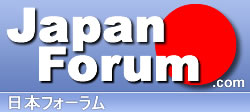
 |
Quote:
|
Quote:
|
There is a book you can usually find at larger book stores which lists 200 of the most commonly used kanji. These kanji are the ones you'll most likely see when shopping or traveling, and determining dates and times. If you are just traveling to Japan for a short time, I recommend getting this type of book.
On the other hand, if you are studying Japanese seriously, you are better off with more intensive books, which introduce kanji in a similar way to how it is taught to Japanese children. The first kanji taught are the most common types with the fewest number of strokes. Later on you learn to make compound-type kanji, which made up of combinations of simple characters. Learning the simple characters (or radicals) makes putting together the more complicated kanji much easier. |
Quote:
For danger, make that 危険. Another good one to memorize is 立入禁止, which is basically "no entry". For shopping 半額 (half price) and #割引 (# of 10 percent off - For example, 2割引 is 20% off, 3割引 is 30% off and so on). To tell the difference between porn and not - if for some reason you can`t tell by the package... Look for 18禁 on it - that`s the porn stuff. |
You will encounter about 2,000. If you don't know, say, 700 or more, you will find yourself in a great deal of kanji trouble.
But presumably, 出口 and 入り口 would be very important for someone who doesn't want to offend locals by exiting at the entrance and vice versa. |
what does 止 by itself mean?
|
Quote:
|
Quote:
|
Quote:
You`ll also spot 止まれ painted on the road ahead of a stop sign, which also says 止まれ. |
Kenpachi11, your logic defeats me. :(
|
| All times are GMT. The time now is 12:46 PM. |